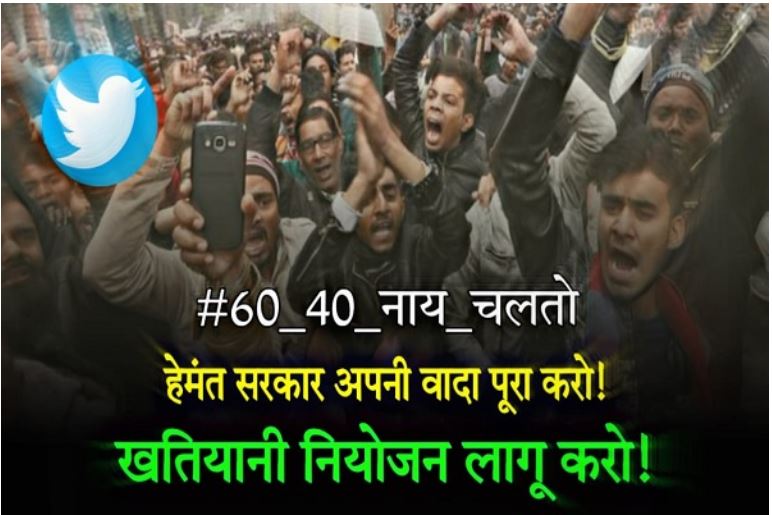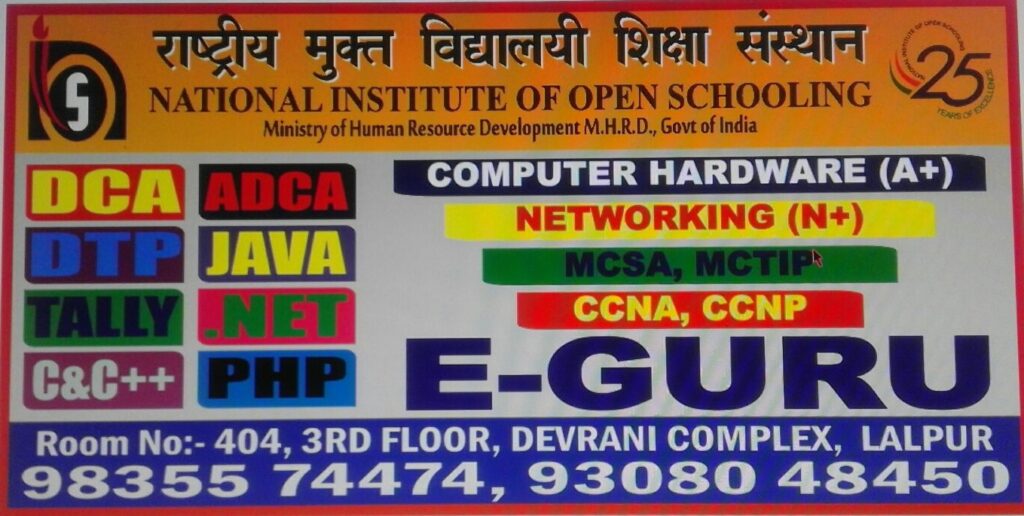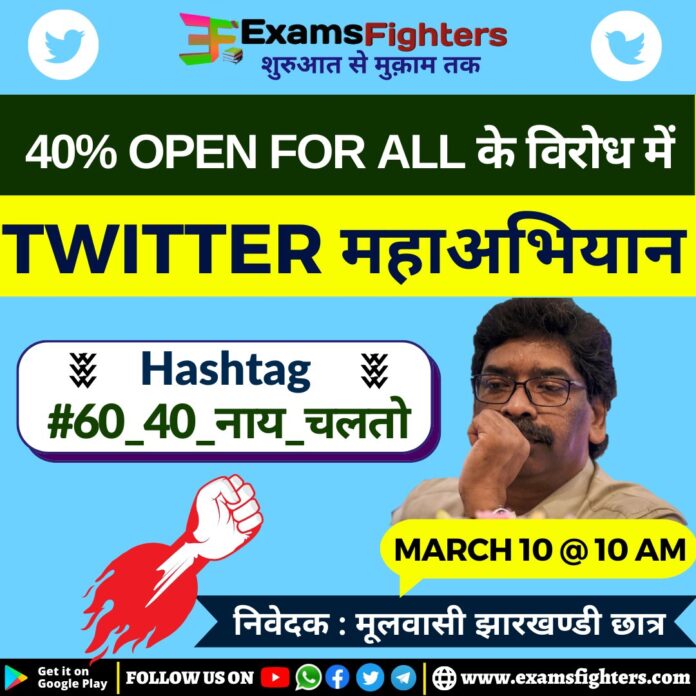In recent weeks, there has been a growing wave of student protests against the Jharkhand government’s new job policy, which says the stakes of jobs ratio of local versus outsiders local having 60% and outsiders with 40% jobs shares in Jharkhand Govt. Jobs, with many taking to Twitter to voice their concerns using hashtags such as #60_40_नाय_चलतो and #ExamsFighters . The policy seeks to change the percentage of local and outsider students in jharkhand government Jobs, with a particular focus on encouraging outsiders in local jobs.
The government has argued that the policy is necessary to create more job opportunities and reduce reliance on traditional employment models. However, many students and young people have voiced their opposition to the changes, arguing that the new policy will make it harder for graduates to find stable, well-paying jobs and will exacerbate existing inequalities in the job market.
One of the main concerns raised by students is that the new policy will make it easier for employers to exploit young workers by offering low pay and poor working conditions. This is particularly worrying given that many young people in Jharkhand are already struggling to make ends meet due to poverty and lack of employment opportunities.
Moreover, many students have argued that the government’s focus on entrepreneurship is misguided, as it fails to take into account the fact that not everyone has the skills or resources to start their own business. They argue that the government should be focusing on creating more well-paying jobs in established industries, rather than trying to encourage everyone to become an entrepreneur.
The student protests have been particularly visible on Twitter, with many using the platform to organize rallies and share information about the campaign. The use of hashtags has been particularly effective in spreading the message and building momentum, with many users using them to share personal stories and experiences of the job market.
The popular hashtags trending is #60_40_नाय_चलतो and #ExamsFighters, which has been used to share articles, blog posts, and other resources related to the campaign. Many students have also used the hashtag to share their personal experiences of job hunting, highlighting the difficulties they have faced in finding stable employment.
Popular hashtag has been #60_40_नाय_चलतो, which has been used to directly challenge the government’s proposals. Many users have used the hashtag to tag government officials and politicians, calling on them to listen to the concerns of young people and reconsider the policy.

The student protests have been met with both support and criticism. Some argue that the new policy is necessary to create more job opportunities in Jharkhand, which has long been plagued by high unemployment rates. Others argue that the policy will only worsen the plight of young local people, who are already facing significant challenges in the job market.
Despite these differences in opinion, the local student protests have served as a powerful reminder of the importance of listening to the concerns of young people. The use of Twitter hashtags has been a particularly effective way of organizing and mobilizing young people, allowing them to share their experiences and build momentum around the campaign.
While it remains to be seen whether the Jharkhand government will listen to the concerns of students and revise its proposals, the protests have certainly succeeded in raising awareness of the issue and putting pressure on policymakers to take action. As such, they serve as a powerful example of the role that young people can play in shaping public policy and advocating for change in their communities.









